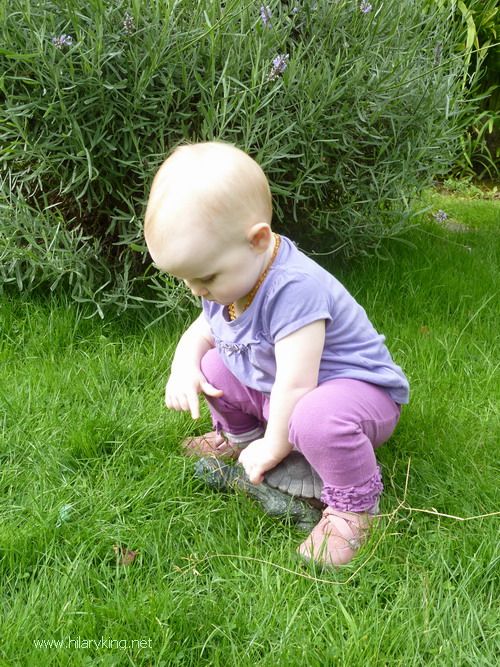Poised for Life
We can learn a lot from small children if we take notice of how they use their bodies as they unselfconsciously move around. Unless they have some physical problems, most small children move about very freely, are alert, poised and ready for life.
This one year old found a tortoise on the grass (an ornamental one, fortunately) and decided it would make a good seat, so she squatted down and started to look at it. This involved rocking forwards from her hip joints, with her hips, knees and ankles quite free and moveable, so that she could see and touch the tortoise’s head – she sat there for some time investigating the tortoise, with lovely poise and alignment.
In Western societies we use chairs more and more as we grow up, so we often loose that lovely freedom in our hip joints that this child demonstrates. It has been interesting recently in London to see people from other cultures, who often sit in a squat whilst waiting at bus stops. Quite elderly people have maintained freedom in their hips and joints and are able to squat with ease and poise.
Many children in the UK begin to loose their natural poise as they get older. They slump as they watch television for hours, imitate the people around them and go to school where they sit at desks for long periods of time – often with unhelpful chairs to sit on. All too frequently this results in children crumpling themselves over their work, which can contribute to back pain, headaches and other disorders, even at a young age.
F M Alexander was very keen to help children avoid developing unhelpful habits and he ran a school in which his Technique was taught as part of the curriculum. These days music and drama colleges often teach the Alexander Technique to their students but sadly there are too few ordinary schools that include the AT on the syllabus.
It is easier to prevent problems of mis-use arising, than to change our habits as an adult and many children have benefited from having Alexander lessons, so they learn to let go of habits that cause them problems and begin to maintain their naturally free movements, so that they remain poised for life.

hi,
i love that child.
the child is using hips as well as hip joints for moving for bending movement and
sitting movement etc.